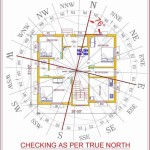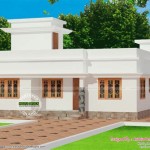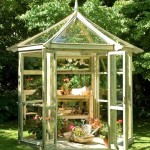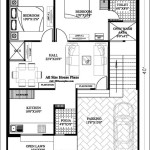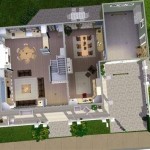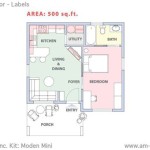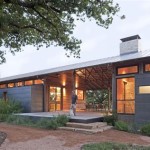South Facing Duplex House Plans As Per Vastu Shastra
Vastu Shastra, the ancient Indian science of architecture and placement, provides guidelines for creating harmonious and prosperous living spaces. When planning a south-facing duplex house, adhering to Vastu principles can significantly influence the energy flow and well-being of the inhabitants. South-facing properties often present unique challenges in terms of Vastu compliance, requiring careful consideration of various elements, including the entrance, room placements, and overall layout. This article explores the key aspects of designing south-facing duplex house plans according to Vastu Shastra, offering insights into optimizing positive energy and mitigating potential negative effects.
Understanding the inherent characteristics of a south-facing property is crucial. Traditionally, south-facing homes have been perceived as less auspicious than east or north-facing ones. This perception stems from the belief that the south is associated with Yama, the god of death. However, with proper Vastu corrections and meticulous planning, a south-facing duplex can be transformed into a highly favorable and energy-rich environment. The key lies in balancing the elements and ensuring the positive flow of energy throughout the house.
Duplex houses, with their multi-level structure, offer more complexity in terms of Vastu compliance compared to single-story homes. Each level needs to be considered individually, as well as in relation to the overall structure. The placement of staircases, rooms, and utilities needs to be carefully planned to ensure a balanced and harmonious energy flow throughout the entire duplex.
Key Point 1: Entrance Placement and Direction
The entrance of a house is considered the primary source of energy flow, and its placement is paramount in Vastu Shastra. For a south-facing duplex, the entrance location requires meticulous attention. According to Vastu, not all south-facing entrances are inauspicious. Certain sectors of the south are considered more favorable than others. The ideal entrance point on a south-facing property falls within specific quadrants of the south direction that are deemed to be auspicious.
Vastu divides the south direction into nine segments or padas. The fifth pada, known as Vitatha, and the sixth pada, Griharaja, are generally considered auspicious for south-facing entrances. Avoid placing the main entrance in inauspicious padas such as the first pada (which can bring misfortune) and the ninth pada (which can bring accidents). These require significant Vastu remedies.
The positioning of the entrance should be complemented with proper direction. The door should ideally face east or north-east as much as practically possible. This can be achieved by setting the entrance slightly towards the east within those auspicious padas. Using a compass to accurately determine the cardinal directions is essential for precise placement.
In addition to the location and direction, the entrance door itself should be aesthetically pleasing and proportionate to the size of the house. It should be the largest door in the house and made of high-quality wood. Avoid using metal doors for the main entrance in a south-facing property. The threshold should be prominent but not obstructive, symbolizing the boundary between the inside and outside worlds. Ensure the door opens inwards in a clockwise direction.
The area surrounding the entrance should be well-lit and clutter-free. A bright and welcoming entrance attracts positive energy. Avoid placing dustbins, shoes, or any other unsightly objects near the entrance. Decorate the entrance with auspicious symbols, plants, or artwork that are in harmony with Vastu principles. A nameplate clearly displaying the house number and family name is also considered beneficial.
Ideally, a south-facing house should have a compound wall that is higher on the south and west sides, offering protection from negative energies and harsh sunlight. The entrance gate to the compound should also be placed in an auspicious location, preferably mirroring the principles used for the main house entrance.
Key Point 2: Room Placement and Orientation
The placement and orientation of different rooms within a south-facing duplex are crucial for ensuring positive energy flow and overall well-being. According to Vastu, each direction is associated with specific energies and elements, and the placement of rooms should align with these principles.
The master bedroom, ideally, should be located in the southwest corner of the duplex. This direction is associated with stability, grounding, and leadership. Placing the master bedroom in the southwest provides the residents with a sense of security and control. The bed should be positioned in a way that the head faces south or west while sleeping. Avoid placing the bed directly in line with the door.
The kitchen is best suited for the southeast corner of the duplex. This direction is associated with the fire element and promotes good health and vitality. When cooking, the person should face east. Avoid placing the kitchen in the northeast corner, as this is considered inauspicious. Ensure the kitchen is well-ventilated and receives ample natural light.
The living room or drawing room can be situated in the north, east, or northeast part of the duplex. These directions are associated with prosperity, knowledge, and spirituality. The living room should be spacious and well-decorated to create a welcoming and inviting atmosphere. Furniture should be arranged in a way that promotes interaction and positive energy flow.
Children's bedrooms can be located in the west or northwest corner of the duplex. These directions are associated with creativity, learning, and social connections. Ensure the children's bedrooms are conducive to studying and relaxation. The study table should be placed in a way that the child faces east or north while studying.
Bathrooms and toilets should ideally be located in the north-west or south of the duplex. Avoid placing them in the northeast, center, or southeast corners, as these locations are considered inauspicious. Ensure the bathrooms and toilets are well-ventilated and kept clean at all times.
Staircases in a duplex should be placed in the south, west, or southwest part of the house. Avoid placing them in the northeast corner, as this can obstruct the flow of positive energy. The staircase should run in a clockwise direction.
Key Point 3: Vastu Remedies and Corrections
Despite careful planning, it may not always be possible to adhere perfectly to all Vastu principles when designing a south-facing duplex. In such cases, Vastu remedies and corrections can be implemented to mitigate any potential negative effects and enhance the positive energy flow. These remedies typically involve the use of specific colors, objects, or arrangements to balance the elements and harmonize the energies within the house.
One common Vastu remedy for south-facing properties is the use of specific colors. Colors like yellow, orange, and red are considered auspicious for the south direction. Incorporating these colors in the interior decor, such as through wall paint, furniture, or accessories, can help to balance the energy and create a more positive atmosphere.
Placing Vastu pyramids or crystals in specific locations can also help to correct imbalances. For example, placing a copper pyramid in the south-east corner can help to strengthen the fire element and promote prosperity. Similarly, placing a crystal grid in the northeast corner can enhance the flow of positive energy and promote spiritual growth.
The strategic placement of plants can also serve as a powerful Vastu remedy. Plants with broad leaves, such as money plants or peace lilies, can help to absorb negative energy and purify the air. Placing these plants near the entrance or in areas where energy flow is obstructed can significantly improve the overall atmosphere of the house.
Using mirrors strategically can also help to correct Vastu doshas. For example, placing a mirror on the north wall of a room can help to expand the space and attract positive energy. Avoid placing mirrors in the bedroom or in areas where they reflect the entrance, as this can disrupt the energy flow.
Yantras are geometric diagrams believed to possess specific energetic powers. Shree Yantra, for example, is considered to be the most powerful Yantra that can mitigate a variety of Vastu doshas in the south-facing home. It is best to consult with a Vastu expert to determine the appropriate Yantras and their proper placement within the house.
Regular cleaning and decluttering are essential for maintaining a positive Vastu environment. A clean and organized house allows energy to flow freely and prevents stagnation. Pay particular attention to removing clutter from the northeast corner, as this is considered the most sacred area of the house. Regular smudging with sage or other purifying herbs can also help to cleanse the energy and create a more harmonious atmosphere.
In conclusion, designing south-facing duplex house plans according to Vastu Shastra requires careful consideration of various factors, including entrance placement, room orientation, and the implementation of appropriate Vastu remedies. By following these principles, it is possible to create a harmonious and prosperous living space that promotes the well-being of the inhabitants.

34x40 South Facing Duplex Home Design As Per Vastu House Designs And Plans Books

30 X40 South Facing 4bhk House Plan As Per Vastu Shastra Autocad Dwg And File

26x38 South Facing Duplex Home Design House Designs And Plans Books

South Facing Duplex House Plan Best Building In Vastu Instyle Homes Tamil

South Facing House Plan As Per Vastu Shastra

30 X40 South Facing House Plan As Per Vastu Shastra Cadbull

20x25 South Facing Home Designs As Per Vastu Shastra House And Plans Books

28 X56 2bhk Awesome South Facing House Plan As Per Vastu Shastra Autocad Dwg And File Details

110 South Facing Home Plans As Per Vastu Shastra E Bok Av A S Sethu Pathi Epub Rakuten Kobo Norge

25 X25 South Facing House Design Cadbull

